CUSTOM PRODUCT EXAMPLES
Spring Energized Seals
UTEX ACCUSEAL®
Utex AccuSeal® is a manufacturer of PTFE and PEEK based, spring energized seals and sealing systems. Some advantages of our PTFE and PEEK compounds over standard elastomers include: lower friction for dynamic applications, greater media compatibility and a greater temperature range on higher pressures.
In general, seals with spring energizers can be designed for static, reciprocating, and slow to medium rotary service. Lip seal designs are reserved for high-speed rotary applications with low pressures where friction is a concern. No matter the system specifications, Utex AccuSeal® can provide the solution.
SEAL JACKET MATERIALS
Utex AccuSeal® jacket materials are compounded and processed for optimum seal performance in a wide variety of sealing environments. Our trained engineering staff can help select materials that optimize the performance of your equipment. The materials listed are our most commonly recommended compounds. Contact AccuSeal for information about additional compounds available.
SEALING SOLUTIONS
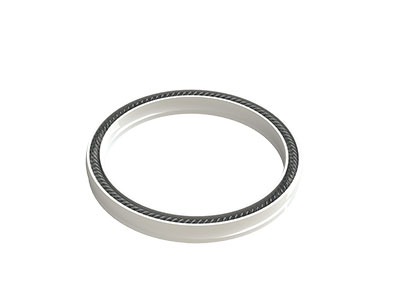
RADIAL SEAL
In a radial configuration, the seal contacts the housing on the outside lip and internal lip. The contact force between the sealing material and the housing and shaft provides the barrier needed to contain the fluid. Radial configurations can be used in rotary and axial dynamic applications.
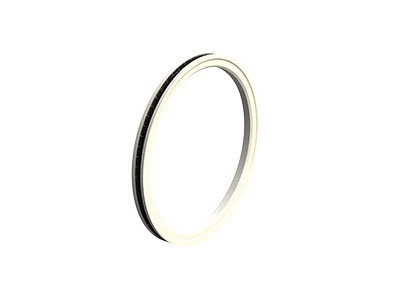
FACE SEAL
Face seal configurations seal two matting parts by using the contact force on each lip. Face seal configurations are used in static applications where a gasket type seal is needed.
SEAL DESIGN PARAMETERS
Load vs. Deflection
When selecting a spring type for a given application, it is important to consider how the spring will load as it is deflected. Friction, positive sealing and wear are all variables that can be adjusted through proper spring selection. The Cantilever spring maintains a linear relationship between spring deflection and spring force and has a gradual slope. This means that as spring deflection increases, so does the force due to the spring. Likewise, as the seal jacket wears, the spring will decompress and the spring force will fall off accordingly. The Helical spring also displays a linear relationship between spring force and deflection but the slope of the line is much steeper. This means that a slight change in the deflection of the spring will result in a dramatic change in the spring force. The relationship between spring force and deflection for the Offset Coil spring is not linear. The flat section of the curve for this type of spring allows for constant spring force over a wide range of deflection. This is a distinct advantage in friction sensitive applications.
Temperature vs. Pressure
Utex AccuSeals® are designed to cover a wide range of temperature and pressure combinations. For many applications a standard seal will be sufficient to solve the problem. There are various combinations of temperature and pressure, as well as a grade for how a standard Utex AccuSeal® will perform in that range. ‘A” being the most standard application and ‘D’ being the most difficult. For those applications outside the ranges shown. consult our factory and our engineering personnel will be glad to assist you.
Extrusion Gaps
An effective way to increase a seal’s performance is to closely control the extrusion gap or E-gap. As temperature increases, the seal jacket will tend to soften and a smaller E-gap will need to be maintained so that the seal will not extrude. The same is true for high pressures. Identical seals will perform differently based on the consistency of the E-gap. If a seal is allowed to extrude, it will not be able to maintain positive sealing. Table 1.9 lists recommended E-gaps at various pressures for standard Utex AccuSeal® cross sections. Above 5000 psi on above 250ºF, a back up ring system is recommended to be used in conjunction with the seal itself.
SPRING OPTIONS
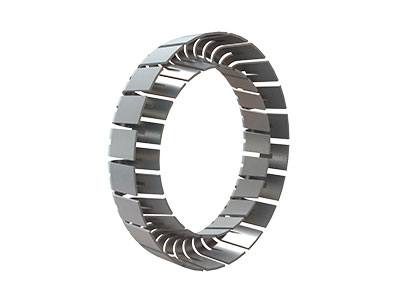
Cantilever Spring
The Cantilever or “V” spring is machined from flat strip stock and formed into its final shape. A good general-purpose spring, the cantilever spring can be used in most reciprocating applications and also in slow to moderate rotary service. The “V” shaped spring design provides a point contact for positive sealing along both the inside and outside diameters of the seal. A “V” spring together with a scraper lip is especially effective in applications with viscous fluid media. Available in all sizes to fit both standard industrial and military glands. It is also available with a FDA approved grade of RTV silicone for food and drug applications.
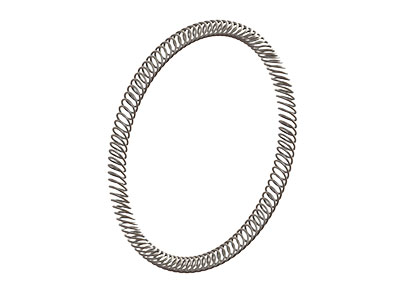
OFFSET-COIL SPRING
The Offset Coil Spring is utilized where friction requirements need to be closely controlled. As the seal jacket wears, the force due to the spring remains constant allowing for a consistent friction force throughout the life of the seal. The offset Coil Spring is a good choice for greater shaft run-outs or wider hardware tolerances. This spring can handle side loading without taking a compression set, even during installation into stepped or closed glands. Available in all sizes to fit both standard industrial and military glands.
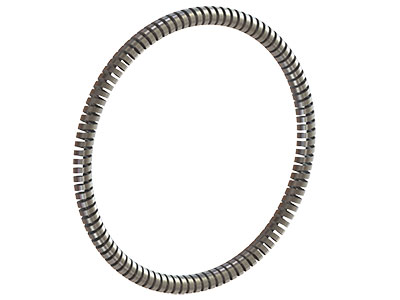
HELICAL SPRING
The Helical Wound Spring is designed for applications where a high unit load and tight sealing are the primary concerns. Most effective for static service, the Helical spring can also be used in slow dynamic systems. This spring is not recommended for dynamic applications where seal life and wear are critical aspects. A small amount of seal jacket wear dramatically reduces the force due to the spring and consequently the overall sealability. Available in all sizes to fit both standard industrial and military glands.
That Spring Energized Seal question you have? We've got the answer to it.